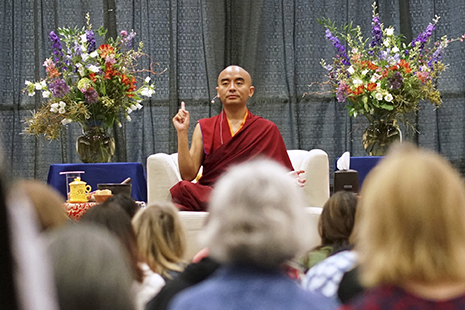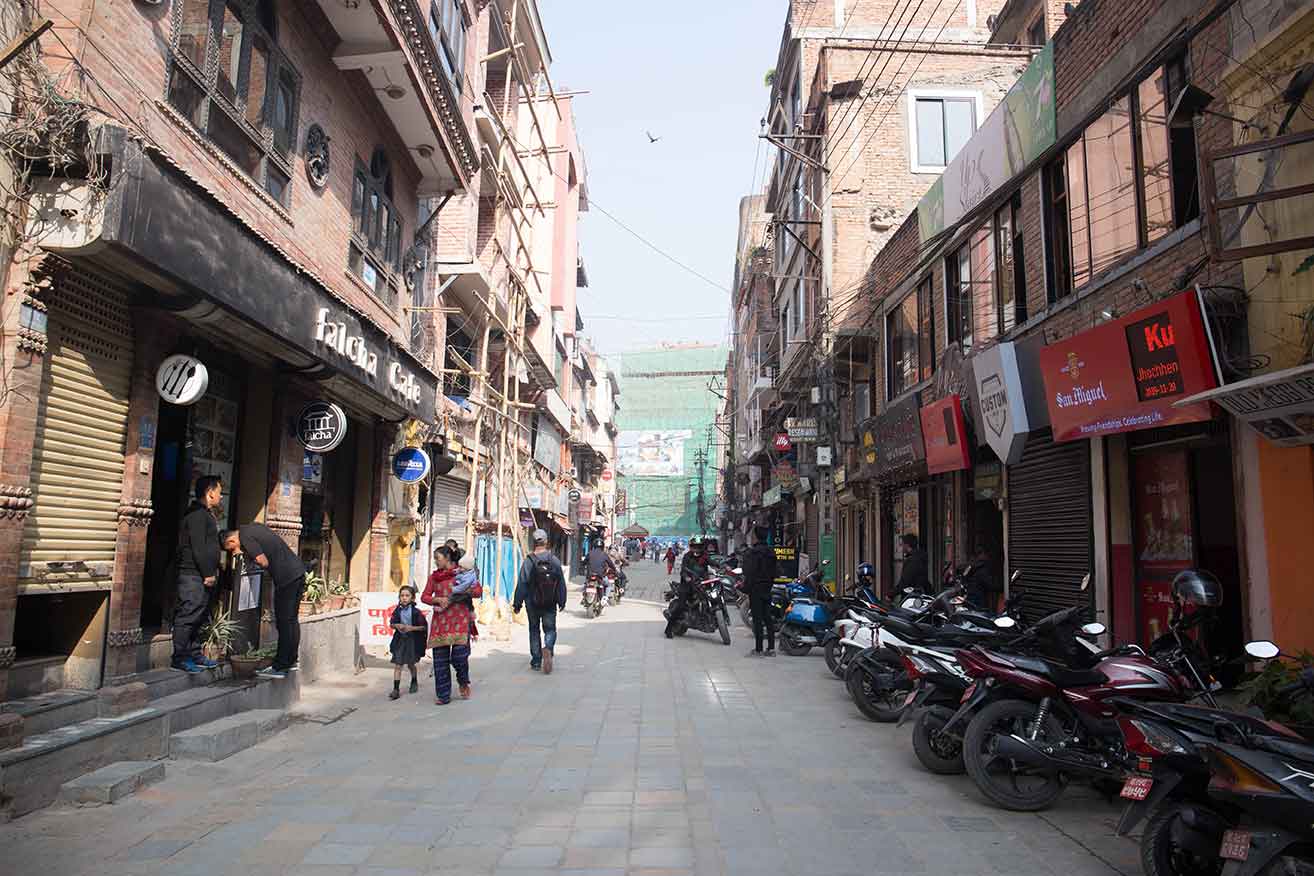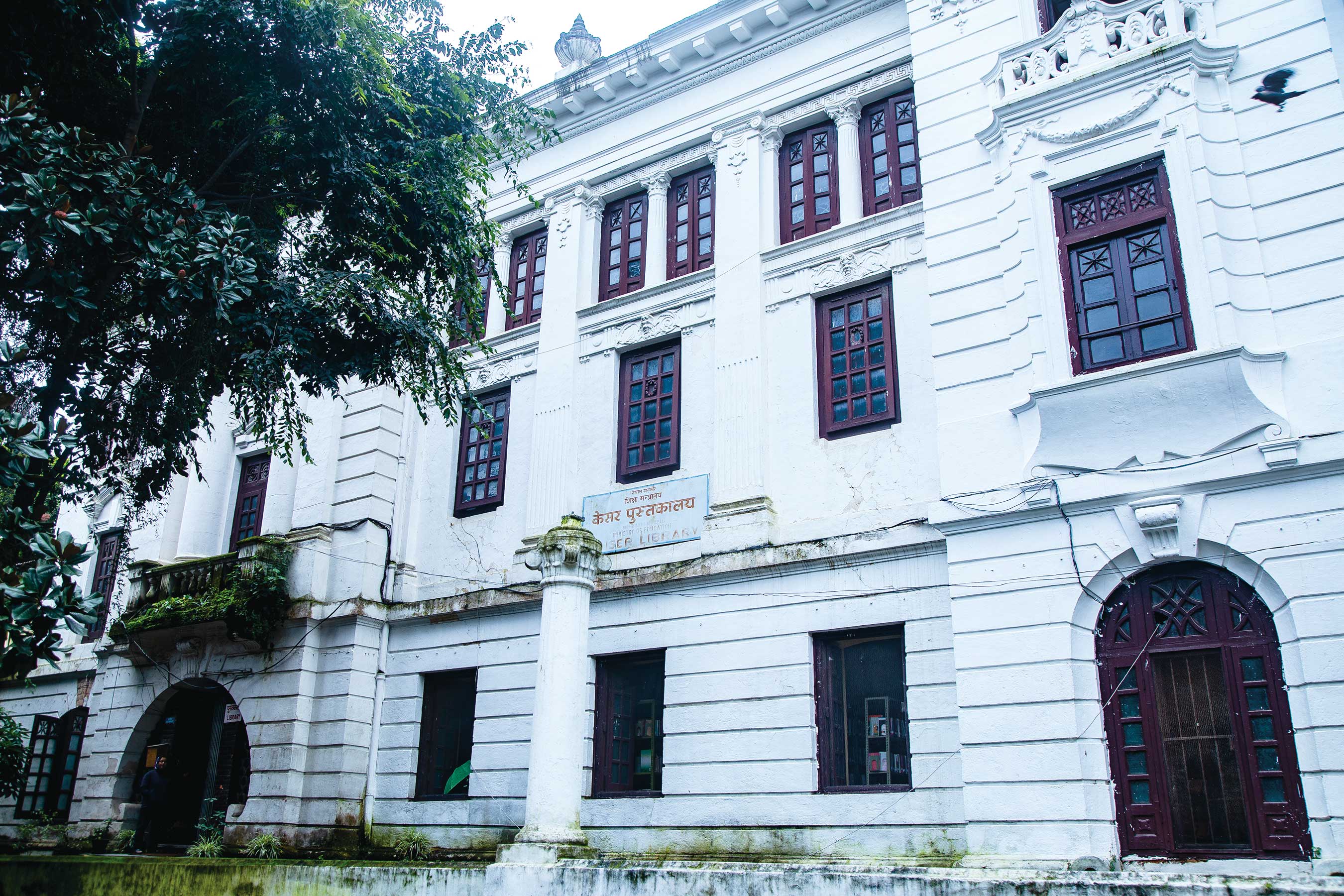“Happily, ever after” is an ending we love to hear at the conclusion of any story or event and to find never-ending happiness is everyone’s dream. In the pursuit of happiness, we go to various measures, performing rituals, making vows, offering prayers, donations and many kind deeds and tasks. But have we seriously reflected on where happiness really comes from? How long does it last? What makes us truly happy? The kind of happiness that is not momentary, but eternal. These questions, I am sure are not only mine, but reflected upon by most of us.

Recently, a lot of my queries were answered when I got this wonderful opportunity to meet and interview a Nepali monk practicing Tibetan Buddhism. Yongey Mingyur Rinpoche, referred to as the ‘Happiest man on earth’ in the Opinion column by Daniel Goldman in the New York Times, July 2009.
Prior to meeting the Rinpoche, I quickly purchased his most popular book ‘The Joy of Living; Unlocking the Secret & Science of Happiness’, 2007. The book is a comfortable read, with chapters divided into short themes and sub themes that allow the reader to pause and reflect. Many parables are woven in to make the reading light and easy, and many a time the Rinpoche, pauses the reading process and provides small exercises, so the reader can experience his teaching at the same time. The former part should not be rushed, since he makes connections between Buddhist insights and scientific knowledge, especially the functioning of our brain. Having a humanities academic background, I needed to read and reflect on understanding the essence and it slowly all made sense to me and I, now truly believe what Albert Einstein once said which is also quoted in the first chapter of the book ‘If there is any religion that can cope with modern scientific needs, it would be Buddhism’.
The narrow, winding and steep path uphill to his monastery felt like the hardship one needs to undergo before we find happiness. Glimpses of the beautiful valley of Kathmandu were like breathers and we finally reached the Tergar Osel Ling Monastery, approximately 30 minutes uphill from Sitapaila Chowk at Ring Road. The refreshing and chilly air quenched my anxiety and the view of the sacred valley from a height was breathtaking. The young Rinpoche was waiting for us in his little garden outside his residence, gazing at nature, probably breathing in the happiness that nature provides. After a brief round of introductions, the Rinpoche and I sat indoors for the interview.
When asked about this great title, he humbly acknowledged that it is the media that refers to him as the happiest man, but his teachers and many gurus are happier than him. The happiness within him, he says is the realization of the great qualities that we all have within ourselves. Science refers to it as ‘innate goodness’, Buddhism terms it as Sugatagarbha, the enlightened nature or the original purity that we are all born with; the English translation of which is ‘Buddha nature’, that is our true nature. When we discover our true nature or the understanding of reality, we can achieve true happiness. This happiness, he stresses is related to wisdom, awareness, love and compassion, and can be experienced from within. The contentment from this achievement is long lasting, not momentary like eating ice-cream or drinking coffee after a long day, or winning a lottery. He says further that the discovery of our true nature also means the liberation of fear, resulting in the joy of contentment and appreciation, something we all should aim for, something that we derive from within ourselves and is independent of any external forces or circumstances. This is true happiness!
I asked, ‘This is the happiness defined by a monk, but what about lay people? The common people/ householders, who are burdened with responsibilities, that makes them wearisome and unhappy, how can they achieve happiness?’
He answers, “Happiness is subjective and there is no such environment or thing that can cause happiness to everyone. Although everybody seeks happiness, every person’s happiness is defined differently and everybody has various ways to achieve happiness. Such kinds of happiness can be temporary. The kind of happiness we should seek for is an eternal one; one that can only be achieved by recognizing your innate nature, through awareness, knowledge, love and kindness.” He stresses on identifying these three as the cornerstone or pillars to happiness. Once identified, everything develops as a support to achieving happiness. Yes, the objective, environment, cause and condition are different for a monk and a common person. “However, connecting to and practicing the three pillars can bring one closer to happiness,” he says. He believes in developing a strong inner strength to discover your innate goodness. Knowledge of wisdom, love and compassion and awareness are achieved through meditation which in turn fosters an internal transformation for those who practice meditation.
Talking about obstacles to happiness, he chose his own experience for an example. Since childhood, he had faced panic attacks. “Panic is my enemy”, he explains, “Now magnified to the panic of panicking” he jokes. To counter these obstacles, we should develop awareness to acknowledge our weakness through meditation. Then only can we overcome them and experience joy, just as his meditation training overrode his propensity for panic attacks. It is important not to ignore our weaknesses, because they will resurface after some time. To tackle them, face them and build friendship with them is the key. This practice works like an antidote to transform the causes of unhappiness to that of happiness. One can achieve real happiness only when you identify and tackle the cause of unhappiness instead of seeking temporary happiness from somewhere else. This self-transformation when achieved can convert poison to medicine, obstacles to opportunities.
Answering the most common question: “How can I be happier?” he says, “Many other questions also do arise, but all stem from the same inquiry to be happier. People seek happiness outside themselves, from external sources. In most developed countries, where people have achieved a lot in relation to higher living standards, security, advanced technology and good salary, but they are unhappy.” People often question the Rimpoche, about why they are still unhappy despite being self-sufficient. His answers are simple: “To seek happiness within ourselves is the key to our happiness. “He reminds us about the three pillars to connect and take support from in the quest for happiness. He explains the philosophy of Buddhism, “It is a step-by-step practice, to analyze the problems, sufferings and find its root cause. How to free ourselves from suffering to attain freedom is the path towards happiness,” and he adds, “This freedom is Nirvana, the freedom or enlightenment from all sufferings and ignorance.” Knowledge of wisdom, awareness, love and compassion are achieved through meditation which in-turn fosters an internal transformation for those who practice meditation. Making these changes in you and through yourself, you can also influence others. Because the world is made of individuals, each individual should seek to bring internal change in themselves and not seek for others to change. This is the same as seeking happiness within you, and then influencing others though your happiness. We all are born with Buddha nature, but it is identification and awareness that we lack.
Being introduced to science at the early age of nine, the Rinpoche’s curiosity on cosmology and physics, were addressed and encouraged by Chilean scientist Francisco Varela, who came to meet his father, Tulku Urgyen Rinpoche as a student. The lessons learned from Varela inspired him to finds connections and similarities between Buddhism and science, and since 1998, he has been exploring these connections by participation in scientific discussions and workshops in the US. He believes that science enables us to explore reality outwards, but Buddhism, promotes or encourages us to explore reality within us. This inward exploration helps to free our minds to achieve lasting happiness. And because Buddhism and science both highlight the impermanent aspect of the nature of reality and its multiplicity, the synthesis of the subtleties of Buddhism and the explorations of modern science will enable us in our own paths of happiness.
The book ‘Joy of Living’, he says is about how to discover happiness within ourselves, by recognizing awareness, wisdom, love and compassion, that is deeply seated within us. He believes that all happiness is within ourselves and we need not seek happiness through outside support. He gives a very appropriate example, of a watch. If we do not know how to read the watch, the watch cannot tell you the time, even though it is the most beautiful or most expensive watch in the world. Similarly, we are all born with the Buddha nature, we only need to recognize it through awareness within ourselves, strengthen it with wisdom, innate love and compassion. Only then can we conquer all the causes of unhappiness and achieve eternal and true happiness. These three components are inseparable.
While reading the book, one notices that it is divided into three parts; the ground, that is the principle understanding of awareness, knowledge, love and compassion, The Path, that is about how to practice: gain awareness, knowledge, love and compassion through mediation and to incorporate them in our daily life. The Fruit is the result, the wonderful experiences of bliss, clarity and non-conceptuality that is derived through meditative practices. Through Rinpoche’s explorations of the interface of neuroscience and Buddhism, we can build on our innate capacity to embrace happiness, inner peace and deep wisdom. The flow of content helps build a certain kind of comfort and intimacy with the Rinpoche; something that I experienced during my interview with him.
Born in the Himalayan region of Manaslu, nature and the local culture of the Nubri valley, he acknowledges played a crucial role in his making. He regards the valley of Nubri as sacred because many incarnations of senior Rinpoches, like Tenga Rinpoche from Benchen monastery at Chauni, his brother Kyabjé Tsikey Chökling Rinpoche, and many highly accomplished practitioners all hail from this place. In ancient times, every person of the village practiced meditation and when they grew old, they took the support of the meditation stick, a vertical stick with a semicircular horizontal part to rest the chin when seated. However this type of practice has vanished.
Rinpoche believes that the teachings of the Buddha originated in Nepal, the land where he was born 2600 years ago, yet these teachings have enjoyed continuous practice in Nepal in an unbroken lineage and live practice travelled to Tibet. He feels blessed to be born here and incorporate these teachings through great Tibetan masters and today when this book has been translated and published in the local Nepali language, he feels extremely happy to fulfill his wish to give back to his homeland, the land of Buddha dharma.
Yongey Mingyur Rinpoche was formally recognized by the sixteenth Karmapa as the seventh incarnation of the master of advanced methods of Buddhism practices and meditation, Yongey Mingyur Rinpoche belonging to the 17th century. At the tender age of thirteen, he entered the three year long retreat at Sherab Ling monastery in India and is one of the youngest students of Tibetan Buddhism who entered such a program. On completion of this retreat, he was appointed the master of the next retreat program at the age of seventeen, making him the youngest retreat master in the history of Tibetan Buddhism. And since the age of nineteen, he has been overseeing and supervising monastic activities in Nepal and India as well as travelling extensively on teaching and private counseling tours. Today he is the guru of the Karma Kagyu and Nyingma lineages of Tibetan Buddhism and has authored four books related to Buddhism practices, while continuing his investigation into the science of happiness and relating our minds, bodies and general health to the activities of the brain.
Swosti Rajbhandari Kayastha
The author is a scholar of Nepali cultural Heritage, with special interest in art & iconography. She can be reached at swostirjb@gmail.com










